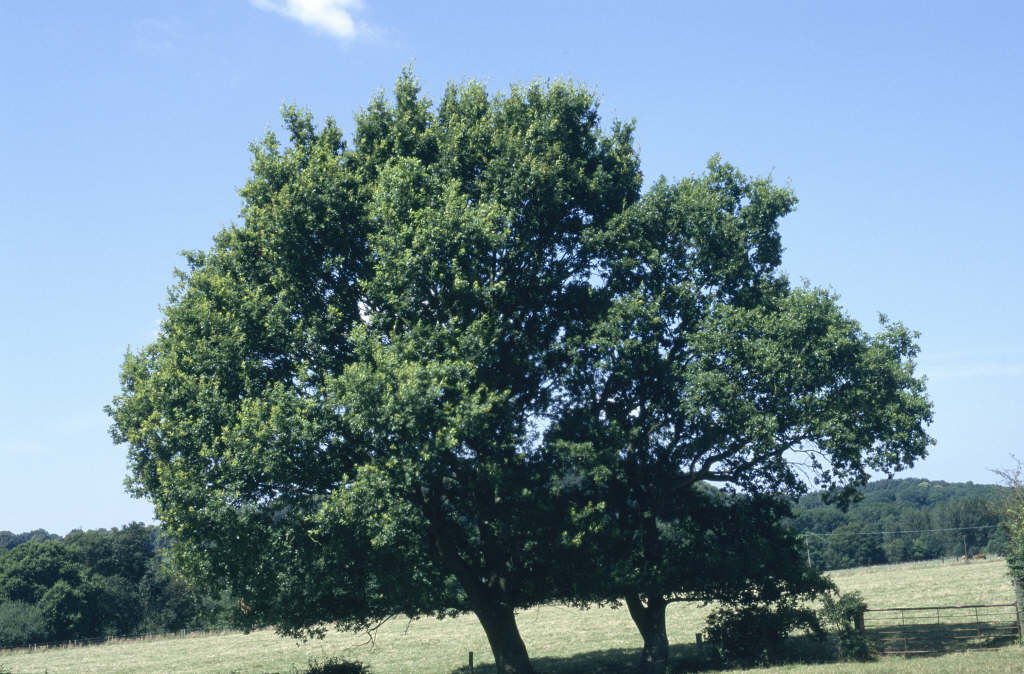Quercus robur
common oak
A large, deciduous tree potentially reaching a mature height of between 20 to 40m in height, with a magnificent broad crown and strong branches beneath. Dark green, rounded and lobed foliage, smooth at the edges, turns reddish-brown in autumn. Inconspicuous, long, yellow-green catkins appear in spring, followed by green acorns, ripening to brown, around 2-2.5 cm long. Sadly the oak is in decline, but still commonly found across the United Kingdom, especially in Southern and Central areas, and an important food source and shelter for a whole range of small mammals, birds and insects
Other common names
aacblack oak
see moreEnglish oak
French oak
pedunculate oak
Polish oak
Slavonian oak
Synonyms
Quercus pedunculataSize
Ultimate height
Higher than 12 metresTime to ultimate height
20–50 yearsUltimate spread
Wider than 8 metresGrowing conditions
Moisture
Moist but well–drained, Well–drainedpH
Acid, Alkaline, NeutralColour & scent
| Stem | Flower | Foliage | Fruit | |
| Spring | Yellow Green | Green | ||
|---|---|---|---|---|
| Summer | Green | |||
| Autumn | Red Brown | Green Brown | ||
| Winter |
Position
- Full sun
- Partial shade
Aspect
West–facing or East–facing or South–facing or North–facing
Exposure
Exposed or Sheltered Hardiness
H6Botanical details
- Family
- Fagaceae
- Native to GB / Ireland
- Yes
- Foliage
- Deciduous
- Habit
- Spreading branched
- Potentially harmful
- Pets (dogs): Harmful if eaten - for further information and contact numbers regarding pets, see the HTA guide to potentially harmful plants
- Genus
Quercus can be deciduous or evergreen trees or shrubs, with entire, lobed or toothed leaves; flowers inconspicuous, followed by characteristic acorns; sometimes good autumn colour
- Name status
Correct
- Plant range
- Europe, SW Asia
How to grow
Cultivation
Grows well in most deep, moist but well-drained fertile soils and is lime tolerant. Many acorns are eaten by wildlife before they are able to germinate. See tree cultivation and oak decline for further information
Propagation
Propagate by seed, sown as soon as ripe, in a cold frame
Suggested planting locations and garden types
- Architectural
- Low Maintenance
Pruning
Pests
May be susceptible to oak processionary moth, aphids, caterpillars, leaf-mining moths and oak gall wasps
Diseases
May be susceptible to powdery mildews and honey fungus
Get involved
The Royal Horticultural Society is the UK’s leading gardening charity. We aim to enrich everyone’s life through plants, and make the UK a greener and more beautiful place.

